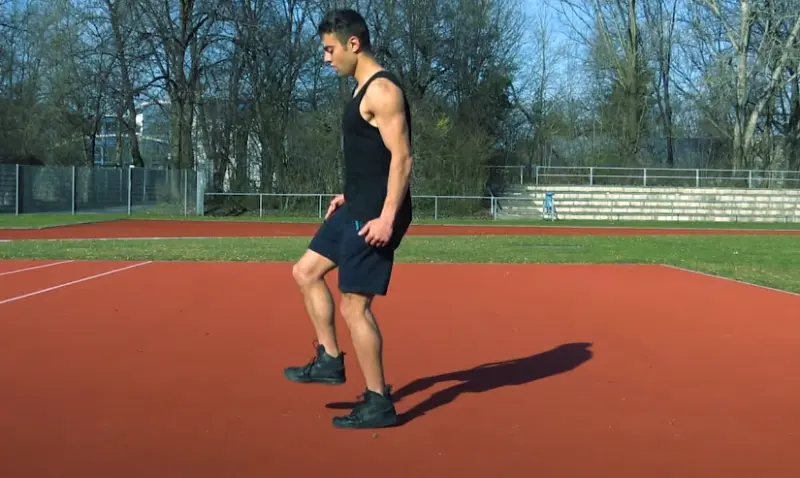Cycling does not demand significant physical prowess. Most individuals can cycle, and once acquired, it remains ingrained. Cycling offers numerous benefits for strength, stamina, and aerobic fitness, promoting overall physical well-being.
Yes, cycling can help build leg strength. In a 12-week study, participants who engaged in short but challenging cycling workouts thrice a week experienced increased leg muscle size and stamina, even with just four minutes of high-intensity cycling per week.
We will discuss the relationship between cycling and leg strength and strategies for maximizing your strength gains through cycling.
Can Cycling Help Build Leg Strength? 3 Science-Backed Ways

One of the best ways to increase leg muscle strength is through cycling regularly and strategically. We will explore three critical factors in leg strength development in cycling and how you can utilize them.
Resistance and Intensity
One of the fundamental aspects of cycling to build leg strength is resistance and intensity. Resistance training involves adjusting the resistance levels of your bike, which impacts the muscle engagement in your legs.
When you increase the resistance, you’ll have to push harder, which can challenge your leg muscles, making them work harder and, consequently, more vital. Here are some benefits of resistance training:
- Increases your leg muscle endurance.
- Stimulates muscle hypertrophy, leading to more robust and sleeker legs.
- Improves the functioning of your cardiovascular system.
Duration and Frequency
Training frequency is another essential factor determining how effective cycling is in building leg strength. Cycling regularly increases the workload on your leg muscles, which can lead to their development.
It’s essential to cycle often to give your leg muscles a consistent challenge and to allow them to adapt to the workload. The key benefits of cycling frequently are:
- Increases your leg muscle strength and function.
- It provides cardiovascular benefits and improves your overall physical health.
- Maintaining a healthy body weight is made easier with it.
Variety in Terrain and Riding Styles
Another way you can maximize leg muscle strength development through cycling is by incorporating different types of cycling terrain and riding styles into your routine.
Interval training involves various cycling challenges, such as going up hills or speeding up and slowing down, which work different parts of your leg muscles, boosting their strength and endurance. Here are some of the benefits of interval training:
- It improves your leg muscle strength and endurance.
- Greatly enhances your leg muscle flexibility.
- It enhances your cardiovascular and respiratory systems.
Strengthening Your Legs with Cycling: Cross-Training Strategies

With the right cross-training strategies, you can enhance your leg strength and take your cycling performance to the next level. We will explore two critical cross-training strategies for building leg strength: plyometrics and weighted pedaling.
Complementary Exercises: Plyometrics
Plyometrics involves explosive movements such as jumping, hopping, and bounding. These movements can help you enhance your leg strength, power, and agility, which is essential for cycling.
By integrating plyometrics into your training routine, you can complement the benefits of cycling and improve your overall performance. Here are some specific plyometric exercises that can help you build leg strength:
- Box Jumps: This exercise involves jumping onto a box or platform and stepping down. It targets your quadriceps, hamstrings, and glutes and can help you improve your explosive power.
- Jump Squats: This exercise involves jumping straight up from a squat position. It targets your quadriceps, hamstrings, glutes, and calves to help you jump and sprint better. Jumping and running ability.
- Lateral Bounds: This exercise involves jumping from side to side. It targets your hip abductors, essential for stability and balance, helping you improve your lateral movement.
With these exercises, your leg strength and your cycling performance will improve.
Strength Training: Weighted Pedaling
Strength training is another critical cross-training strategy for building leg strength. Adding resistance to cycling workouts can target your leg muscles and promote muscle development.
Weighted pedaling is a specific strength training technique that involves adding weight to your pedals or using a resistance trainer. Here are some benefits of weighted pedaling:
- Promotes Muscle Development: By adding resistance to your cycling exercises, you can encourage muscle development in your quadriceps, hamstrings, and glutes.
- Increases Endurance: Weighted pedaling can also help you increase your endurance by making your muscles work harder and longer.
- Improves Sprinting Ability: By targeting your leg muscles with resistance, you can improve your sprinting ability and overall speed.
You can use a resistance trainer or attach weights to your pedals to incorporate weighted pedaling into your training routine. Begin with a light resistance and gradually increase it as you get stronger.
The Relationship Between Leg Strength and Cycling
One key element of such a plan is periodization, which involves designing cycling routines that optimize leg strength gains over time.
Nutrition and hydration are also crucial, mainly through nutrient intake timing. We’ll look at cycling’s relationship with leg size and the factors that affect leg muscle growth.
Goal-Oriented Training Plans: Periodization
Periodization is a specific training strategy that involves dividing your cycling routine into distinct phases, each with a particular focus. Different muscle groups and energy systems result in more efficient leg strength gains. Some common phrases in a periodized cycling plan include:
- Base phase: You’ll build your endurance and aerobic capacity through lower-intensity rides over long distances.
- Strength phase: Here, you’ll focus on building pure leg strength through high-intensity, low-rep workouts that target specific muscle groups.
- Power phase: In this phase, you’ll shift your focus to explosive power and speed, with short, intense intervals that challenge your muscles to produce more force quickly.
By strategically cycling through these different phases, you can avoid plateauing and continually challenge your muscles to grow stronger.
Nutrition and Hydration: Nutrient Timing

Just as crucial as your cycling routine itself is the nutrition and hydration you provide your body to support muscle recovery and growth. Nutrient timing is a term that emphasizes the critical role of proper food with a focus on consuming the proper nutrients at the right time.
Some critical elements of nutrient timing include:
- Pre-workout nutrition: Consume carbohydrates and protein an hour before your ride to provide your body with the fuel for a high-intensity workout.
- During-workout hydration: Staying properly hydrated during your ride is essential to maintaining muscle function and preventing fatigue. Aim to consume water and electrolyte drinks throughout your ride.
- Post-workout recovery: Within 30 minutes of finishing your ride, consuming protein and carbohydrates is essential to kickstart the muscle repair and growth process. This could be a protein shake, a snack with protein and carbs, or a full meal.
Conclusion
Cycling is an effective way to build leg strength. By adjusting the resistance and intensity of your workouts, varying your terrain and riding styles, and incorporating complementary exercises and strength training, you can gain substantial leg strength through cycling.
It is essential to be mindful of the potential challenges and considerations, such as overtraining and individual variations. You can maximize leg strength gains by utilizing goal-oriented training plans, focusing on nutrition and hydration, and following recovery protocols.
FAQs
Can Cycling Help You Build Muscle?
A study published in the Journal of Movements and Sports Sciences revealed that incorporating sprint and resistance training into regular cycling can have temporary benefits such as increased metabolism and muscle building.
More muscle mass can lead to higher calorie burn, even during rest. This makes it an excellent approach for managing weight and reducing body fat.


